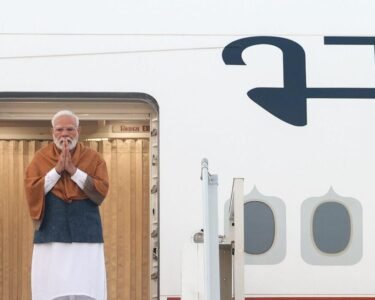The United States is nearing a critical moment in its trade relationship with India, with President Donald Trump indicating that a limited bilateral trade agreement is “almost complete.” His statement comes just as the White House begins dispatching tariff notification letters to 14 countries, setting an August 1 deadline for compliance — a move that significantly raises the stakes in ongoing global trade negotiations.
Among the countries receiving the tariff letters are major Asian economies such as Japan, South Korea, and Bangladesh. Unless new trade agreements are concluded, these nations could face a steep 25% import duty on goods entering the U.S. beginning next month. The warning also affects Thailand, Indonesia, South Africa, and others.
In a press briefing on Tuesday, Trump announced: “We’re almost there with India. We’ve already closed deals with the UK and China, and India could be next.” The U.S. president made it clear that these new tariff threats are part of his administration’s broader push to rebalance trade terms and protect American industries. He also stressed that the U.S. is open to further dialogue — but only before the August 1 deadline.
India Pushes for Relief Ahead of Tariff Reversion
For India, this development is especially significant. After Trump imposed a 26% tariff on Indian exports in April 2025, the U.S. granted a temporary relaxation to 10% for 90 days — a window that expires this week. With the deadline looming, New Delhi is working overtime to prevent a return to harsher trade terms.
Indian negotiators, led by senior commerce ministry officials, have been in Washington over the past few weeks finalizing details of what is being described as a “mini deal.” According to insiders, this phase of the agreement intentionally avoids contentious issues such as dairy and agriculture, focusing instead on easing tariffs in sectors like textiles, electronics, and services.
A senior Indian trade official stated anonymously, “We are working on an outcome that protects our core sectors while creating room for broader cooperation. There’s agreement on many points already. What remains are the finishing touches.”
25% Tariffs Loom Over Global Trade Partners
Trump’s announcement included confirmation that other trading partners would also be impacted by the new tariff regime unless swift negotiations are concluded. Nations like Japan and South Korea, often close U.S. allies, were among those who received tariff letters. Countries such as Bangladesh, Myanmar, and South Africa are also on the list.
“These are not suggestions,” Trump said. “These are decisions that will take effect unless we reach fair and reciprocal trade agreements. August 1 is the final date, and we expect nations to come to the table.”
He added that exceptions could be made in “justified cases,” leaving some room for diplomatic maneuvering. However, analysts believe that the administration’s tone suggests limited flexibility.
A High-Stakes Moment for Global Supply Chains
The developments come at a time when global trade is under renewed pressure. Following years of relative stability under the Biden administration — which had taken a more cooperative approach to trade — Trump’s return has revived the protectionist “America First” doctrine. The reimposition of tariffs could have far-reaching consequences for supply chains, especially for countries dependent on U.S. exports.
Economists warn that if the India-U.S. trade talks collapse, the impact could be severe on key Indian sectors like textiles, pharmaceuticals, electronics, and information technology. Indian exporters had briefly enjoyed smoother trade relations thanks to relaxed compliance norms and visa flexibility introduced during the previous U.S. administration. However, the resurgence of tariffs now poses a serious challenge.
“The pressure is intense,” said a policy analyst at the Indian Council for Research on International Economic Relations (ICRIER). “This is not just about tariffs — it’s about India’s ability to remain competitive in a rapidly shifting global market.”
Key Sticking Points
Negotiations between India and the U.S. have been primarily stalled over agricultural access and digital trade rules. The U.S. has been pushing India to open up its dairy sector — traditionally a protected area due to religious and cultural sensitivities — and reduce import duties on high-value crops like almonds, apples, and genetically modified food products.
India, on the other hand, is seeking greater access for its own exports, including garments, gems, jewellery, and agricultural produce such as shrimp, oilseeds, and bananas.
Despite these differences, both sides appear eager to avoid a full-blown trade clash. Reports suggest that a limited framework agreement could be signed as early as next week, paving the way for a broader trade pact later this year.
Conclusion
As the countdown to August 1 continues, the India-U.S. trade relationship stands at a crucial juncture. Trump’s firm deadline, combined with the potential reversion to earlier punitive tariffs, has injected urgency into the talks. Whether both countries can finalize the agreement in time will not only determine future tariff structures but may also set the tone for U.S.-India relations in the months ahead.
With diplomatic teams racing against the clock, a deal may yet be reached — but the margin for delay is vanishing fast.







